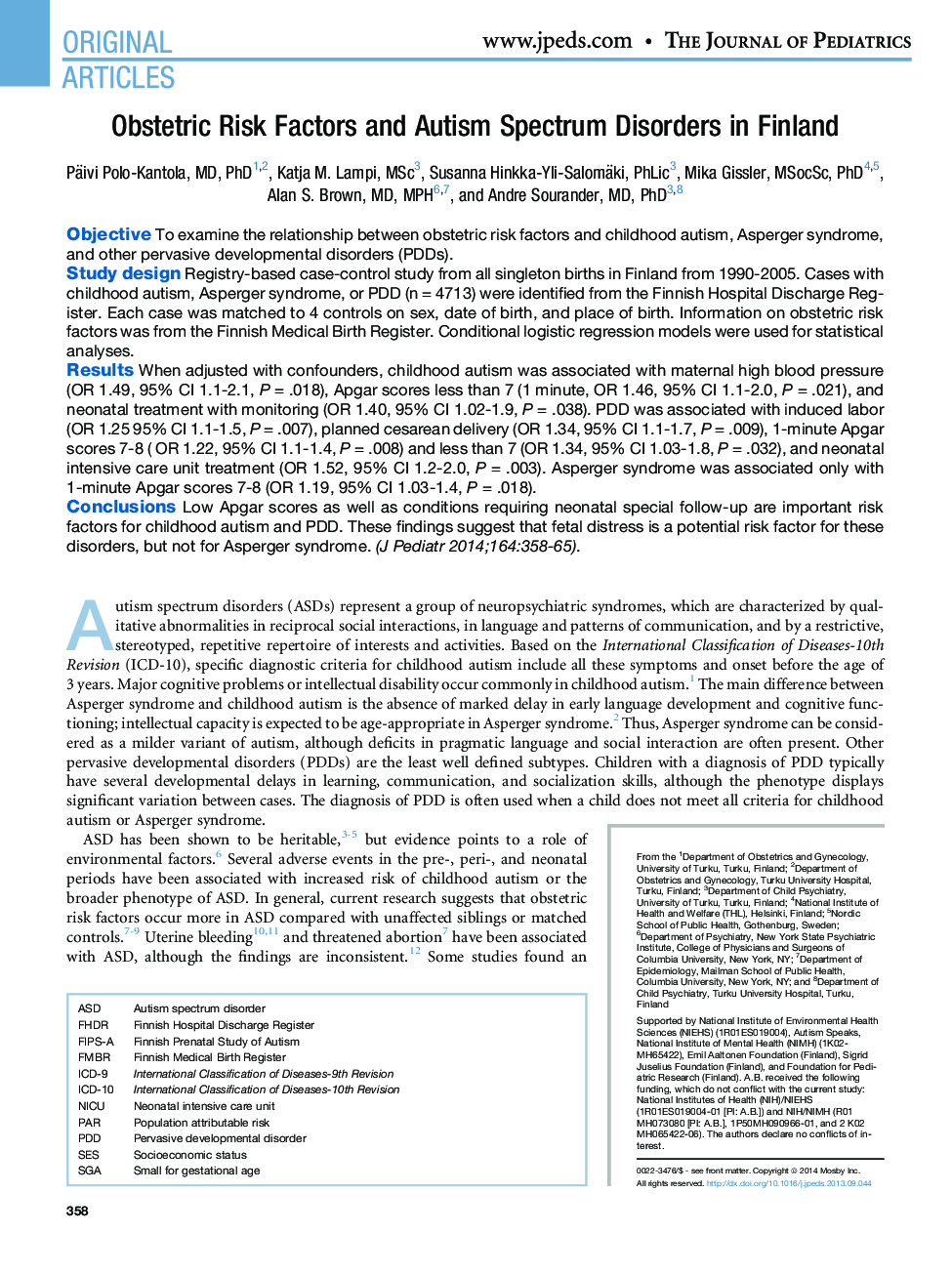| Article ID | Journal | Published Year | Pages | File Type |
|---|---|---|---|---|
| 6221917 | The Journal of Pediatrics | 2014 | 8 Pages |
ObjectiveTo examine the relationship between obstetric risk factors and childhood autism, Asperger syndrome, and other pervasive developmental disorders (PDDs).Study designRegistry-based case-control study from all singleton births in Finland from 1990-2005. Cases with childhood autism, Asperger syndrome, or PDD (n = 4713) were identified from the Finnish Hospital Discharge Register. Each case was matched to 4 controls on sex, date of birth, and place of birth. Information on obstetric risk factors was from the Finnish Medical Birth Register. Conditional logistic regression models were used for statistical analyses.ResultsWhen adjusted with confounders, childhood autism was associated with maternal high blood pressure (OR 1.49, 95% CI 1.1-2.1, P = .018), Apgar scores less than 7 (1 minute, OR 1.46, 95% CI 1.1-2.0, P = .021), and neonatal treatment with monitoring (OR 1.40, 95% CI 1.02-1.9, P = .038). PDD was associated with induced labor (OR 1.25 95% CI 1.1-1.5, P = .007), planned cesarean delivery (OR 1.34, 95% CI 1.1-1.7, P = .009), 1-minute Apgar scores 7-8 ( OR 1.22, 95% CI 1.1-1.4, P = .008) and less than 7 (OR 1.34, 95% CI 1.03-1.8, P = .032), and neonatal intensive care unit treatment (OR 1.52, 95% CI 1.2-2.0, P = .003). Asperger syndrome was associated only with 1-minute Apgar scores 7-8 (OR 1.19, 95% CI 1.03-1.4, P = .018).ConclusionsLow Apgar scores as well as conditions requiring neonatal special follow-up are important risk factors for childhood autism and PDD. These findings suggest that fetal distress is a potential risk factor for these disorders, but not for Asperger syndrome.
